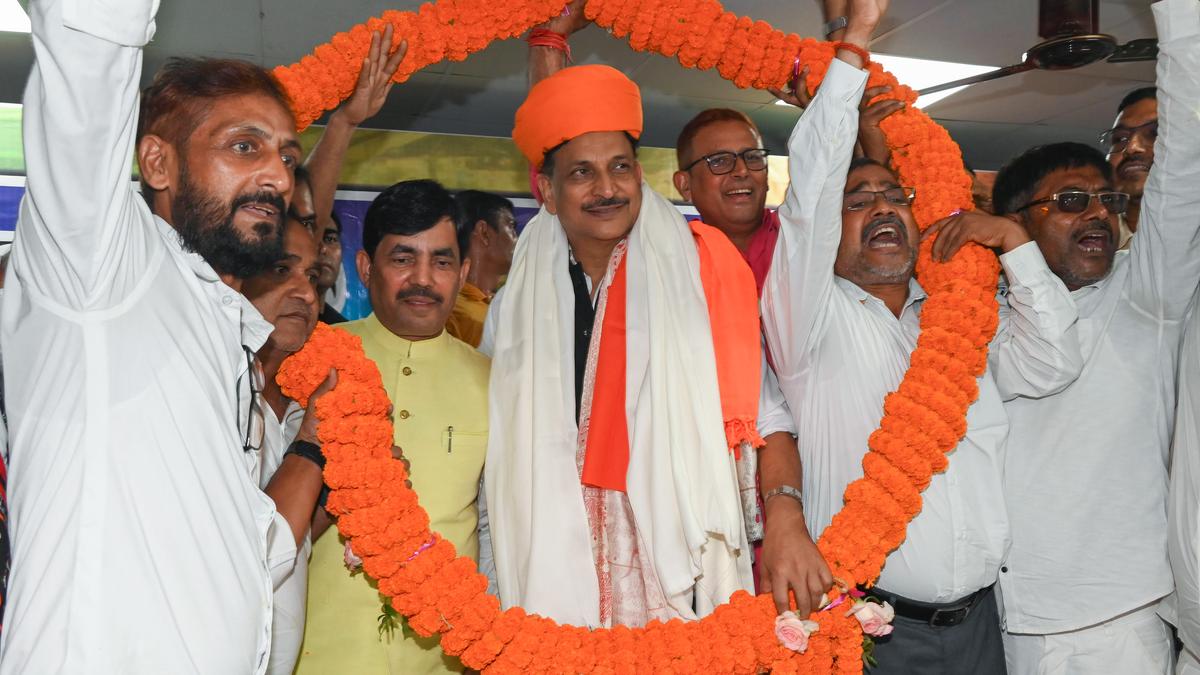
Former Union Minister Rajiv Pratap Rudy being garlanded in Patna after winning the election to the post of Secretary of the Constitution Club of India.
| Photo Credit: ANI
Political journalists, especially those tracking government, politics, and policy, generally cover elections, face-offs in Parliament, arguments in Cabinet meetings, and national conventions of political parties. Club elections rarely make the cut. Sometimes, they make it to the diary column. As clubs are private enclaves with their own rules, they are not of public interest and for that reason, they are not of interest for a national newspaper.
However, this changed in mid-August when elections for the post of secretary (administration) at the Constitution Club of India (CCI) in New Delhi became a BJP versus BJP fight. The contestants were former Union Ministers Rajiv Pratap Rudy and Sanjeev Balyan.
The CCI was inaugurated in 1965 by the then President, S. Radhakrishnan. Located close to Parliament, it was conceptualised as a place for MPs to mingle and for public functions to be held in its many seminar and conference halls, but fell into decrepitude a few years ago.
Mr. Rudy, the incumbent who had held the post for more than two decades, was one of those credited with reviving the CCI. His challenger, Mr. Balyan, said that it was time for a change — a likely campaign pitch. There was no real media interest in the contest, except in the piquant situation of a BJP versus BJP fight.
All this changed close to polling when Mr. Balyan’s colleague, Nishikant Dubey, a BJP MP, spoke of ridding the CCI of a cabal of officers, pilots (Mr. Rudy is a pilot with IndiGo), and brokers who were running the club. The perception grew that Mr. Balyan enjoyed the support of the BJP Central leadership.
This mobilised Opposition MPs, including Congress president Mallikarjun Kharge and senior leader Sonia Gandhi, to take the rare step of voting in these elections. Union Home Minister Amit Shah also voted. Counting went on for 26 rounds, with the national media tracking it like a Lok Sabha contest.
With votes pouring in from the Opposition, Mr. Rudy won handsomely. Mr. Balyan did not get enough votes as several BJP MPs stayed away from the election — first because it was a BJP versus BJP contest; and also because Mr. Dubey made some remarks on their colleague, which they did not appreciate.
The most important question from this contest, apart from who would win, was why it acquired the proportions that it did. Clearly, the elections to the CCI became a heuristic device to examine all the discontents of a party that has been in power for over a decade. The fact that the Opposition consolidated behind a candidate belonging to the ruling party, but who appeared not to have the support of its Central leadership, as well as the failure of many MPs of the same ruling party to turn up and vote for a candidate who was perceived to have the support of the Central leadership, was too interesting to pass up. It also revealed, yet again, the polarisation that we see everywhere. The elections at the CCI, which until now, had not seen a contest of this kind, was not considered a mere club election; it became one where Opposition unity could be demonstrated, even if it was in support of a contestant from the BJP.
The size of the prize, the magnitude of the platform, and the scale of the reach of the CCI were all magnified. The election turned into a gladiatorial contest with the hype, scrutiny, and excitement generally reserved for national elections.
As a political journalist, one fell back on the truism that if you go looking for politics, it is ubiquitous; that even political parties are clubs of a kind, sorted along ideological lines; and that each and every election — however small or big — has something political to say.
Published – August 22, 2025 01:31 am IST
